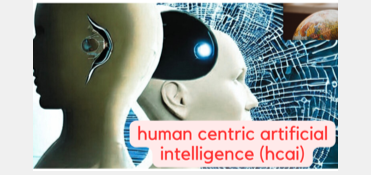The focus on pushing AI technologies to the next level without giving adequate thought as to how it can adversely impact us humans beings and our resources needs to take a pause.
Perhaps it was ok to do that at the very beginning of the AI era, when use-cases barely scratched the surface of our lives. These days, AI use-cases have proliferated extensively and seeped reasonably deep into our daily lives. It is surely not wise to ignore AI’s adverse impacts and potential to inflict harm on us and our planet anymore.
There are so many technical articles focusing on how to build LLMs and other AI models. Yet hardly anyone talks about analysis and design of safe and Human-Centric AI use cases. It seems that analysis and design phases have literally faded from our memories. Yet, the need for analysis and design for safe and responsible AI systems has never been greater than now.
I have been a proponent of Human-Centric AI since early February 2023 when I started writing my book on AI and also set up the AIPathfinder web-site for Human-Centric AI. A practical definition of Human-Centric AI is that humans should be at the centre of AI use-case analysis, design, build, evaluation and testing. Every AI use-case that is analysed, designed and built should be for the benefit of humans and conserving the planetary resources needed by us to survive.
In fact, the unanimous United Nations declaration of 21 March 2024 shows powerful global support for human-centric and safe AI has developed only very recently. The passing of this declaration by the UN will form the basis for national governments to set up regulations for monitoring the design and use of AI systems and data.
It will soon become necessary to be able to analyse the adverse impacts of AI use-cases on humans and the planet FORMALLY and be able to REMEDIATE them through design considerations to be compliant with the law.
Granted it has been a complex and fuzzy area to analyse; an area skirted by many in the race to go live. It cannot remain so. That’s where my book comes in. It deals with methods to obtain clarity in AI use-case analysis and tools for human-centric AI design.
The book will assist programmers, designers, managers and business professionals to understand the human and sustainability issues in AI analysis and design in a logical manner. They will be able to cut through the complexity and fuzziness created by soft issues like ethics, human-rights and privacy. By using the tools provided in the book it will be possible to design, build, evaluate and test safe Human-Centric AI systems.
The book is available on Amazon. Some country URLs are listed below.
India https://www.amazon.in/dp/B0CW1D7B88
USA https://www.amazon.com/dp/B0CW1D7B88
UK https://www.amazon.co.uk/dp/B0CW1D7B88
France https://www.amazon.fr/dp/B0CW1D7B88
Follow link
